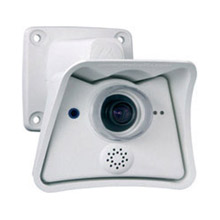
In the decentralised system structure established years ago by Mobotix, the intelligence resides in the cameras themselves and not on a central PC. This enables Mobotix video systems to work with fewer cameras and system components, making them considerably more cost-effective than analogue systems. For example: one single Mobotix camera can monitor an entire gas station with four lanes, recording the video for a full day in the camera itself. The complete system, including the camera and integrated software, recording and weatherproofing, costs less than €1,000 - significantly undercutting the price of an analogue system.
The analogue technology is restricted to just 0.4 megapixels for live images and usually 0.1 megapixels for recorded images - a tiny 1/30th of the resolution offered by the latest Mobotix models. With these resolution rates, analogue systems require one camera for each gas station lane, as well as a PC with expensive software for recording of the images. The vast majority of IP camera manufacturers use the same image size and also the same centralised system structure as analogue systems. Therefore, common IP technology fails to reduce the number of cameras and still requires a central PC with software, offering the user few advantages over a conventional analogue solution. This is why these kinds of centralised IP systems are unlikely to replace analogue systems on a large scale. Only Mobotix' decentralised concept is what makes high-resolution video monitoring profitable in the first place.